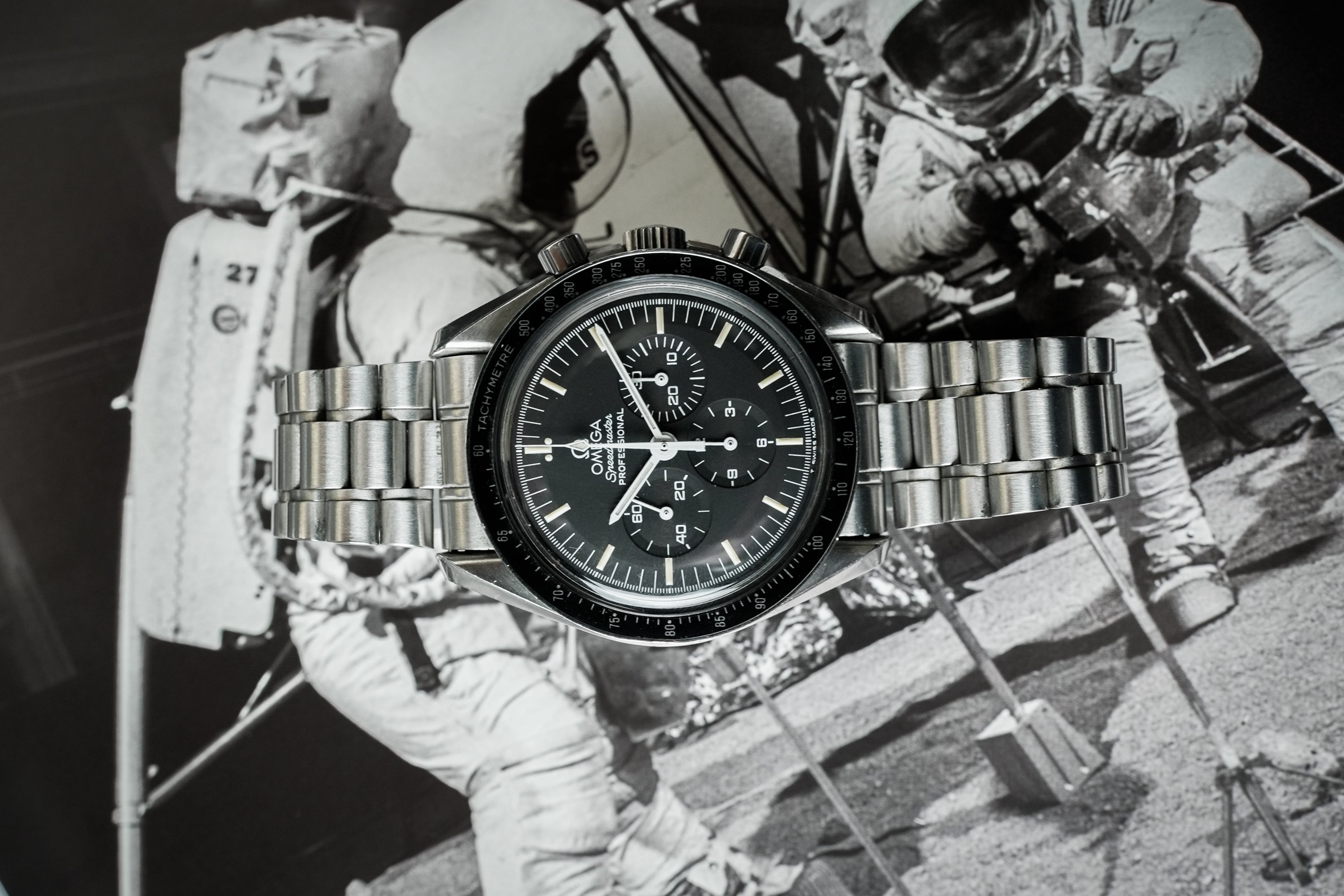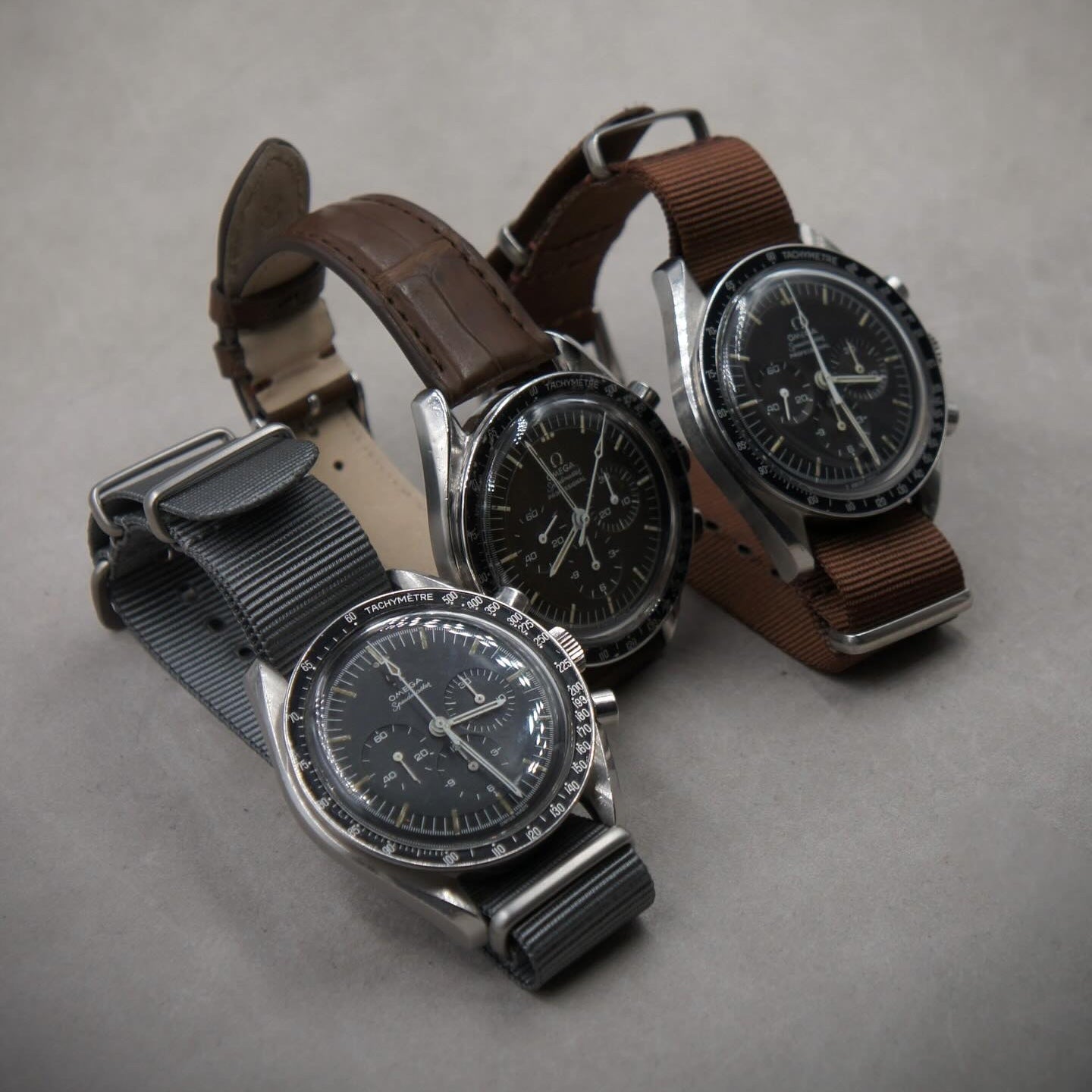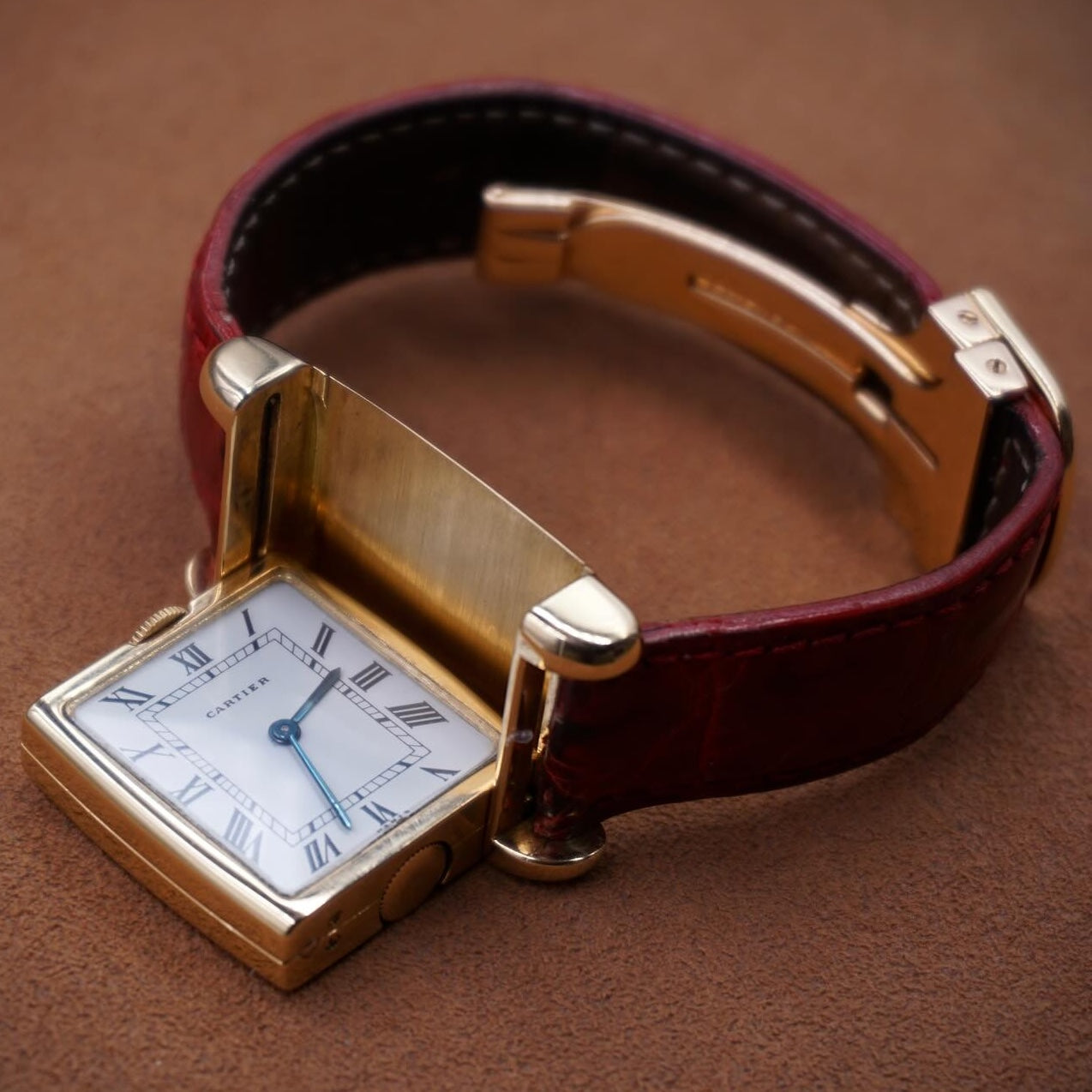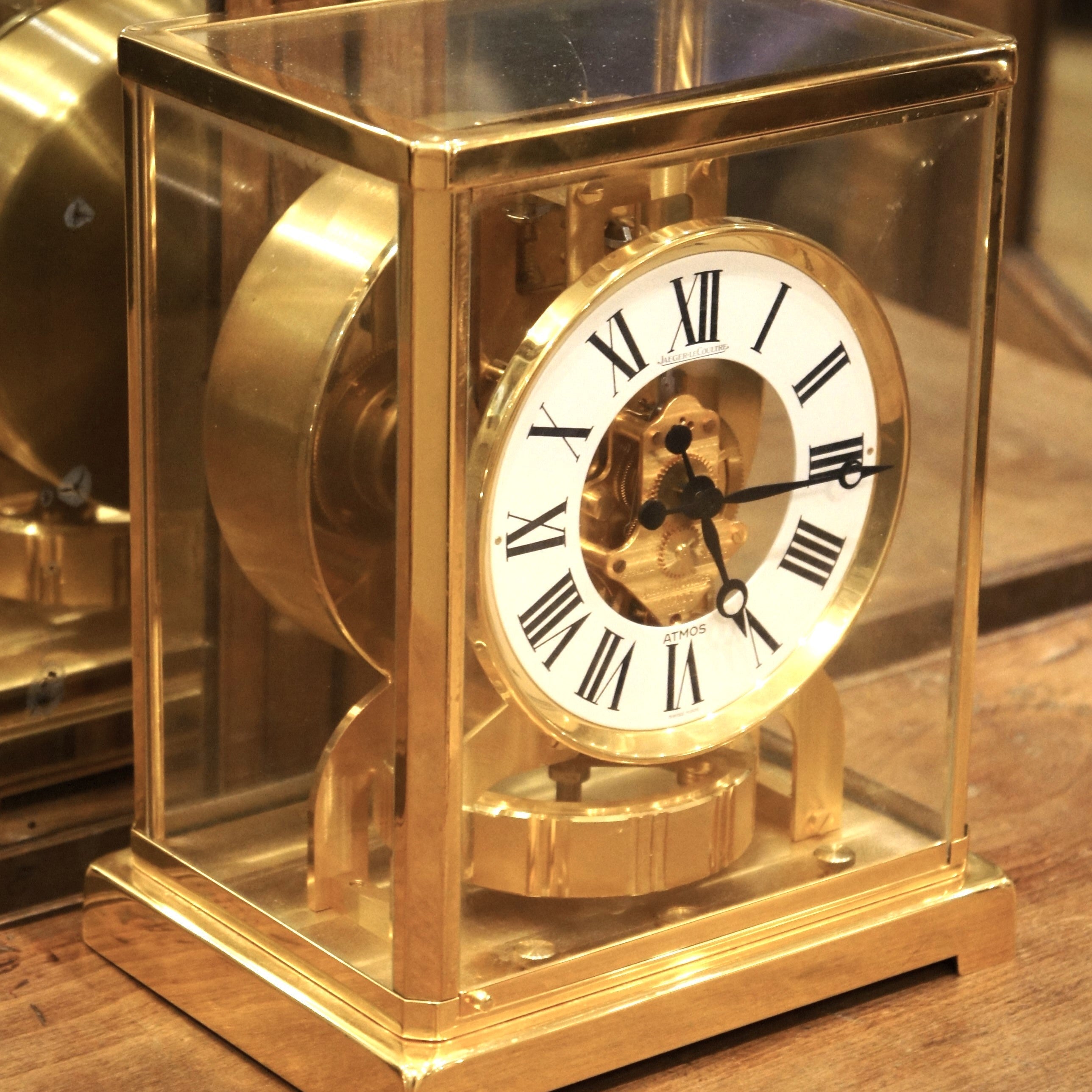Article: A Century in the Skies: The Pilot’s Watch

A Century in the Skies: The Pilot’s Watch
From the pioneering days of open-cockpit aviation to the era of supersonic jets and manned spaceflight, pilot’s watches have been the epic, functional bridges between the men and women who defied gravity and the great watchmaking houses that joined them in the conquest of the skies. Initially conceived as essential onboard instruments, these watches evolved into technological marvels—symbols of adventure, precision, and heritage. This article retraces some key chapters in the history of pilot watches throughout the 20th century, highlighting the innovations that continue to captivate collectors today.
The Birth of the Pilot Watch: Cartier and Longines Lead the Way
In 1904, Louis Cartier answered the request of aviator and friend Alberto Santos-Dumont, who needed a legible and practical watch he could wear on his wrist while flying. The result was the Santos-Dumont, a square case, Roman numerals, and leather strap—radically different from the traditional pocket watch. Santos-Dumont famously wore it both in public and during his airborne exploits.
In the 1930s, Longines introduced the Hour Angle, co-developed with Charles Lindbergh. It allowed pilots to calculate longitude during transatlantic flights—a critical tool at the time. Longines also innovated with the Weems Second-Setting Watch in 1929, based on the system of U.S. Navy Commander Philip Van Horn Weems. It enabled pilots to synchronize their watches with radio time signals, greatly aiding celestial navigation.
World War II and the Rise of the Military Chronograph
The 1940s marked the widespread adoption of the wristwatch in armed forces. IWC, A. Lange & Söhne, Laco, and Stowa produced the now-legendary B-Uhr watches for the Luftwaffe: oversized 55mm cases, anti-magnetic shielding, and hacking seconds for precise synchronization.
Meanwhile, Breitling began integrating a circular slide rule into its watches—a concept that would reach its peak with the iconic Navitimer. Universal Genève contributed with the Aero-Compax, a chronograph featuring a dedicated mission timer for pilots.
The Postwar Era: Breguet, Jaeger-LeCoultre, and Cold War Tools
In the 1950s, pilot watches became more specialized. Breguet’s Type 20, made for the French Naval Air Force, introduced the flyback chronograph—allowing pilots to restart timing with a single push. It quickly became a benchmark among both aviators and, later, collectors.
Jaeger-LeCoultre distinguished itself through cockpit instruments used in British and French military jets, and with the celebrated Mark 11, made to British Ministry of Defence specifications: anti-magnetic, extremely reliable, and purpose-built.
During the same decade, Universal Genève released the Polerouter, designed by a young Gérald Genta for SAS (Scandinavian Airlines System) pilots flying polar routes. With its anti-magnetic protection and micro-rotor movement, it combined elegant design with technical prowess.
The Jet Age and the Democratization of the Pilot’s Watch
The rise of commercial aviation in the 1950s and '60s gave birth to new icons. Rolex created the GMT-Master with Pan Am, allowing pilots to track two time zones simultaneously. The Glycine Airman, with its 24-hour dial, appealed to both military and civilian aviators.
Breitling’s Navitimer, officially adopted by the Aircraft Owners and Pilots Association (AOPA) in 1954, included a circular slide rule for calculating fuel consumption, speed, and distance. A true flight computer on the wrist, its technical design, perfect legibility, and large case diameter made it a cockpit staple. Later versions would add automatic winding and chronometer certification.
In 1969, Omega responded with the Flightmaster, engineered to withstand extreme cockpit vibrations and track multiple time zones.
To the Edge of Space: The Omega Speedmaster and the Astronaut-Pilot Era
No history of pilot watches would be complete without the legendary Omega Speedmaster—the first watch worn on the Moon, and one of the most rigorously tested ever built. Launched in 1957 as a sports chronograph, it was adopted by NASA in the early 1960s after surviving extreme qualification tests: heat, cold, vacuum, acceleration, and shock.
Worn by astronaut-pilots Neil Armstrong and Buzz Aldrin during Apollo 11 in 1969, it became a symbol of space exploration. Its rugged build, tachymeter bezel, and precise chronograph made it indispensable for test pilots and mission commanders alike. To this day, it remains in use in space and with select air forces.
The Speedmaster embodies the continuum between aviation and space travel—a testament to how pilot’s watches didn’t just accompany progress, but helped drive it forward.
From Cockpit to Collector’s Case: A Living Legacy
Why do these watches continue to captivate collectors today? Beyond their rugged and functional aesthetics, they encapsulate a century of human daring and horological excellence. They tell the stories of legendary aviators, covert missions, and historic leaps in aerospace.
Innovations such as the flyback function, anti-magnetism, slide rule bezels, or micro-rotor calibers weren’t just mechanical feats—they were practical answers to real aviation challenges. For collectors, these pieces represent the perfect union of form and function.
The Brands That Shaped Aviation and Space Horology (1904–1970s)
- Cartier (1904) – Created the first pilot’s wristwatch: the Santos-Dumont.
- Longines (1929–1935) – Pioneered celestial navigation and time signal synchronization (Weems, Hour Angle).
- IWC & Jaeger-LeCoultre (1940s–1950s) – Military benchmarks with the Mark 11 and cockpit instruments.
- Breguet (from 1954) – Invented the flyback chronograph for the French Naval Air Arm.
- Breitling (1942–1954 and beyond) – Introduced the integrated slide rule and dominated the aviation chronograph field.
- Universal Genève (1940s–1950s) – Innovated with the Aero-Compax and the Polerouter.
- Rolex & Omega (1950s–1960s) – Brought aviation functionality into the realm of luxury (GMT-Master, Flightmaster).
- Jaeger (1920s–1960s) – Produced high-precision cockpit instruments and military pilot watches.
- Omega Speedmaster (1957 and onward) – NASA’s choice and a lasting symbol of space exploration.
A Legacy Still Aloft
Now sought-after collectibles, pilot’s watches have evolved over the decades while remaining true to their core mission: to accompany and enable human achievement in the air and beyond. Valued for their engineering, authenticity, and storied pasts, they are cornerstones of 20th-century watch culture.
Whether drawn to the utility of a Navitimer, the rarity of a Type 20, the modernity of a Polerouter, or the precision of a Speedmaster, these watches offer a tangible link to a golden age—when horological precision could mean the difference between life and death.
Explore our curated selection of vintage pilot watches at TimeProof and own a piece of aviation history.



